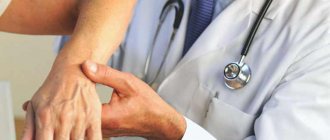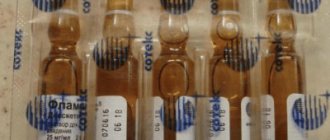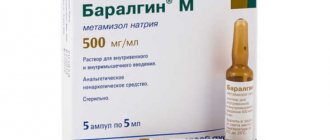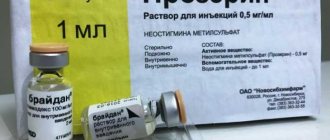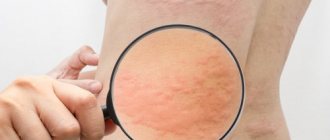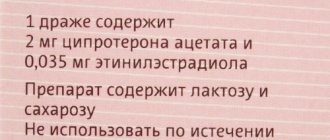- November 27, 2018
- Other drugs
- Inna Makagon
"Dona" is a medicine whose pharmacological action is based on regulating metabolism in cartilage tissue.
The drug is produced in several dosage forms. The tablets are intended for oral use - they are covered with a white film coating and have an oblong shape.
The main active ingredient is glucosamine; one tablet contains 750 milligrams. Available in polyethylene bottles of sixty or one hundred and eighty pieces.
Powder - for making a suspension for oral administration, twenty sachets in a package. This form of the drug contains 1500 milligrams of glucosamine.
Ampoules "Don" are used for intramuscular administration. One milliliter of medicine contains 200 milligrams of glucosamine.
Further in the article we will talk about injections. The additional components of the solution are water, sodium chloride, and lidocaine hydrochloride.
Pharmacological actions
The drug has anti-inflammatory and pronounced analgesic effects. With constant use of the medication, the deficiency of glucosamine is compensated, the production of hyaluronic acid in the intra-articular fluid is enhanced, the permeability of the joint capsule is increased, and physiological metabolism in the cartilage tissue of the joint is restored.
People noted the restoration of normal functioning of the affected joint and a decrease in pain with constant use of the medication.
Indications
The main reasons for prescribing Don injections are the following conditions and diseases:
- Scapulohumeral periarthritis (inflammatory disease of the tissues surrounding the shoulder joint: periosteum, tendons, joint capsule).
- Chondromalacia of the patella (a disease caused by degenerative changes in cartilage tissue. This condition is accompanied by loss of elasticity).
- Spondyloarthrosis (one of the types of osteoarthritis, refers to a degenerative-dystrophic disease that affects all structures of the facet joints).
- Osteochondrosis (damage to intervertebral discs and other spinal tissues).
- Spondylosis (involutional process of gradual wear and aging of the anatomical structures of the spine, accompanied by degeneration of the outer fibers of the anterior or lateral sections of the fibrous ring, its protrusion under the pressure of the pulpy core that has retained its turgor, deposition and ossification of the anterior longitudinal ligament and the formation of marginal bone growths along the axis of the spine only in circumference anterior and lateral sections).
- Knee arthrosis (a complex disease of degenerative-dystrophic origin that affects the osteochondral part of the knee).
- Osteoarthritis (a common form of arthritis that is a chronic condition affecting the joint, articular cartilage, joint capsule, bones, muscles and ligaments).
- Arthrosis of the intervertebral space (degenerative joint disease, in which premature wear of intra-articular cartilage occurs).
What contraindications does the drug have?
Before treatment with Don injections, a person needs to study the instructions in detail, since the drug has a number of certain prohibitions:
- Individual intolerance to the drug substances.
- The patient is under twelve years of age.
- Pregnancy.
- Breast-feeding.
- Phenylketonuria (a hereditary disease that belongs to the group of enzymopathies associated with impaired amino acid metabolism).
- Severe liver and kidney diseases.
Instructions for use for Don injections
The drug is used only for intramuscular administration. The drug is not intended for intravenous infusion.
Before use, mix the medication solution with the solvent in one syringe. The prepared mixture is injected into the muscle in a dose of three milliliters 3 times a week for four to six weeks.
According to the instructions, Don injections can be combined with oral administration of the medication in powder form. The duration and regimen of treatment should be prescribed only by a medical specialist.
The instructions for tablets recommend taking one tablet (750 milligrams) orally twice a day, during meals, with water. The pharmacological effect is achieved two to three weeks after taking the medicine. The minimum course of therapy is four to six weeks. If necessary, therapeutic treatment is repeated with a time interval of two months.
The powder is consumed orally, 1.5 grams once a day. The duration of therapy is usually six weeks. Courses of treatment are usually repeated with a break of two months.
Release form and composition
The drug is available in the following dosage forms:
- Dona - film-coated tablets, 750 mg, packaged in polyethylene bottles of 60 and 180 pieces, 1 bottle in a cardboard box. They have an oblong shape and are white in color. A cross-section of the tablets clearly shows two layers: the inner white with a hint of brown and the outer pure white. The active ingredient is glucosamine in the form of sulfate; auxiliary components – povidone, macrogol 6000, microcrystalline cellulose, talc, croscarmellose sodium and magnesium stearate; film shell composition – copolymer of methyl methacrylate and methacrylic acid, talc, crushed titanium dioxide, copolymer of ethyl acrylate, methyl methacrylate and trimethylammonioethyl methacrylate chloride, macrogol 6000 and triacetin;
- Dona is a solution for intramuscular administration in 2 ml dark glass ampoules, 6 ampoules in a cardboard box complete with solvent. The active ingredient is glucosamine (200 mg in 1 ml or 400 mg in 1 ampoule). Auxiliary components are sodium chloride, lidocaine hydrochloride and distilled water. The solvent is diethanolamine and distilled water (up to 1 ml);
- Dona – powder in sachets for preparing a solution for oral administration. One sachet contains 1.5 g of glucosamine in the form of sulfate; There are 20 sachets in a box.
Can the medicine be used during pregnancy?
According to the instructions for use, Don injections are not prescribed for the treatment of women during an “interesting situation”. There is no information regarding the safety of the medication on the intrauterine development of the fetus, therefore treatment with this drug is prohibited.
The use of the drug during lactation is also not prescribed, since there is no information regarding the possibility of the active substance getting into milk. If it is necessary to carry out treatment with the drug in lactating women, it is important to decide on the abolition of breastfeeding.
Adverse reactions
If the dosage of the medication specified by the doctor is strictly followed, no negative effects on the therapy are observed in humans. If there is excessive sensitivity to the substances of the drug or a strong excess of the concentration of the active component, the annotation indicates that the patient may experience the following negative phenomena:
- Stool disorders.
- Flatulence (excessive accumulation of gases in the intestines).
- Pain in the stomach.
- Nausea.
- Rashes.
- Burning.
- Hyperemia (overflow of blood in the capillaries of any organ or area of the body).
- Dizziness.
- Lethargy.
- Apathy (a state characterized by indifference, indifference, a detached attitude towards others, and a lack of desire for any activity).
- Euphoria (increased mood, a joyful feeling, a feeling of well-being that is not substantiated in reality).
- Tremor of the limbs (rapid movements of the limbs or torso, provoked by muscle contractions and associated with a time delay of afferent signals).
- Numbness of fingertips.
- Tachycardia (rapid heartbeat).
- Heart rhythm disturbance.
Indications for use:
- Osteochondrosis , occurring mainly in the spine or one of its parts. The disease is associated with dystrophic defects in cartilage joints. Osteochondrosis can occur due to constant heavy physical exertion, infection entering the vertebrae, or poor nutrition. Symptoms of the disease are pain in different areas of the spine, starting from the neck to the tailbone, stiffness in the most ordinary movements, numbness of the limbs;
- Osteoarthritis of the joints, typical of the knees, hips, and wrist joints. The disease occurs due to damage to cartilage tissue in the articular surfaces. The cause of osteoarthritis should be considered injury, infection or heredity. Signs of the disease are pain during movement, a feeling of stiffness;
- Arthrosis , especially its variety - deforming arthrosis. The disease is associated with the gradual destruction of cartilage. There are many reasons for the appearance of arthrosis; these can be injuries, birth defects, or other diseases that cause arthritis. Symptoms include pain during weather changes or intense physical exertion.
Contraindications
Remember that the use of the medicine is unacceptable for people who are allergic to the main substances contained in the composition. Before use, you should consult a specialist. If you have a personal intolerance to fish or shellfish products, you should not use the pharmaceutical product, as it contains their waste products. If you have problems related to the cardiovascular system, then you need to stop taking the drug and switch to a less powerful drug.
Side effects
This type of bad effect on the body does not often appear in patients. This is mainly caused by an overdose or an allergic reaction. The most common complaints include headache, fatigue, drowsiness, stomach pain, and bowel dysfunction. Allergy sufferers are characterized by rash, itching, redness and rashes on the skin. In rare cases, vision deteriorates, hair begins to fall out, vomiting or frequent nausea. If you experience side effects, you should immediately stop using the medication and switch to a more gentle remedy.
Interaction
The drug can be combined with non-steroidal anti-inflammatory drugs and steroid hormones from the subclass of corticosteroids produced by the adrenal cortex. Medicines from these groups complement and enhance the pharmacological effect of each other.
“Don” injections cannot be given simultaneously with taking drugs that contain ethyl alcohol and sedatives, since this may suppress the functioning of the central nervous system in the patient.
When antacids or adsorbents are used together, the absorption of the active component of the drug by the mucous cavities of the stomach and intestines is disrupted. If it is necessary to use medications of these groups, it is necessary to maintain an interval between doses of at least four hours.
"DONA": composition
- The main ingredient of this drug is glucosamine. This is a substance of chemical origin, similar to natural glucosamine. It is necessary in the human body, because it performs a function necessary for joints - it produces fluid for cartilage tissue. The main feature of the component is its ability to regenerate damaged cells in the joints, thereby helping them recover faster. The advantage is that glucosamine is an integral component of the mass present in the joint cavity;
- An equally important active substance is crystalline sulfate. Its general chemical formula includes glucosamine sulfate and sodium chloride. The component is used in many areas of human life, including medicine. Its action is due to the removal from the body of harmful toxins remaining after using any medication. The necessary substances are absorbed, and the harmful ones remain in the stomach and intestines;
- Lidocaine hydrochloride is an auxiliary ingredient that is used for mild anesthesia of any diseased area of the body;
- Other additional components of the medical product: water, diethanolamine.
Peculiarities
According to the instructions for use, Dona ampoules are not recommended for use by children under twelve years of age, since clinical information regarding the effect of the drug on the child’s body has not been provided.
For people with a medical history of impaired liver or kidney function, the daily dosage of the drug is determined by a medical specialist on an individual basis.
Injections are recommended with extreme caution for patients with diabetes mellitus and bronchial asthma. During therapy with this medication, people with a predisposition to diabetes need to regularly have their blood tested to determine their glucose levels.
special instructions
Caution should be exercised when using Dona in patients with diabetes, bronchial asthma and seafood intolerance. A solution for intramuscular administration is prescribed with caution to patients with arterial hypotension and chronic heart failure.
Dona is compatible with glucocorticoids and non-steroidal anti-inflammatory drugs.
The drug is rich in sodium (75.5 mg per tablet), and this must be taken into account in patients who are on a controlled sodium diet.
There is no data on the effect of Dona on the ability to drive and control potentially dangerous mechanisms.
Reviews
Almost ninety percent of reviews about Don injections are positive. Patients note a rapid pharmacological effect and good tolerability of the drug.
Only ten percent of patients reported minor digestive disorders and headaches when using the medication. In other situations, there were no complaints of poor health while using the drug. "Dona" is one of the most effective drugs for eliminating inflammation in the joints, which is well tolerated.
The only negative side of the medicine can be considered its price, but it is justified by its positive effect.
Side effects
The drug is well tolerated by patients. In some cases, the following side effects occurred during the use of Dona:
- Nausea, vomiting, gastralgia, diarrhea or constipation, flatulence;
- Drowsiness, headache, dizziness, disorientation, euphoria, tremor, numbness of the mucous membrane of the mouth and tongue, double vision (due to the content of lidocaine in Dona's solution);
- Cardiac conduction disturbances;
- Allergic reactions - itching, urticaria, erythema.

